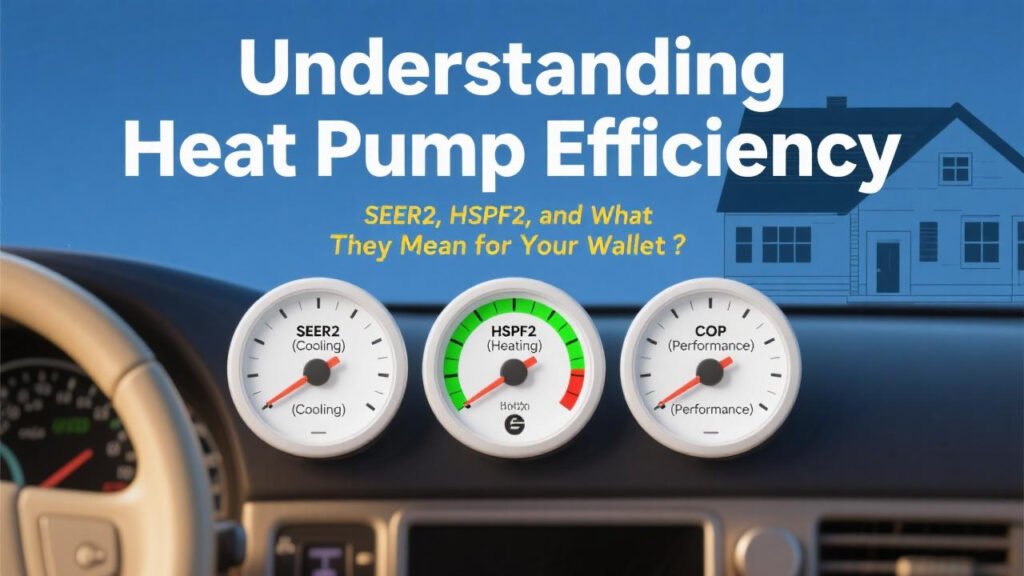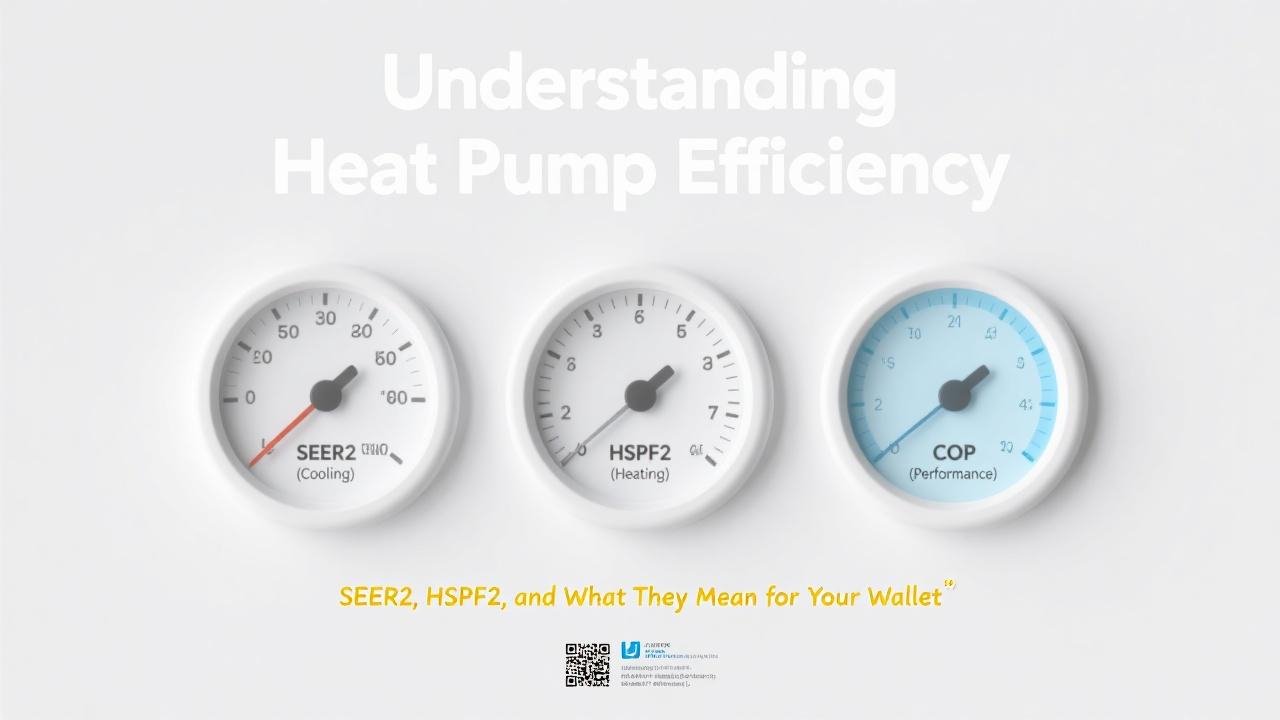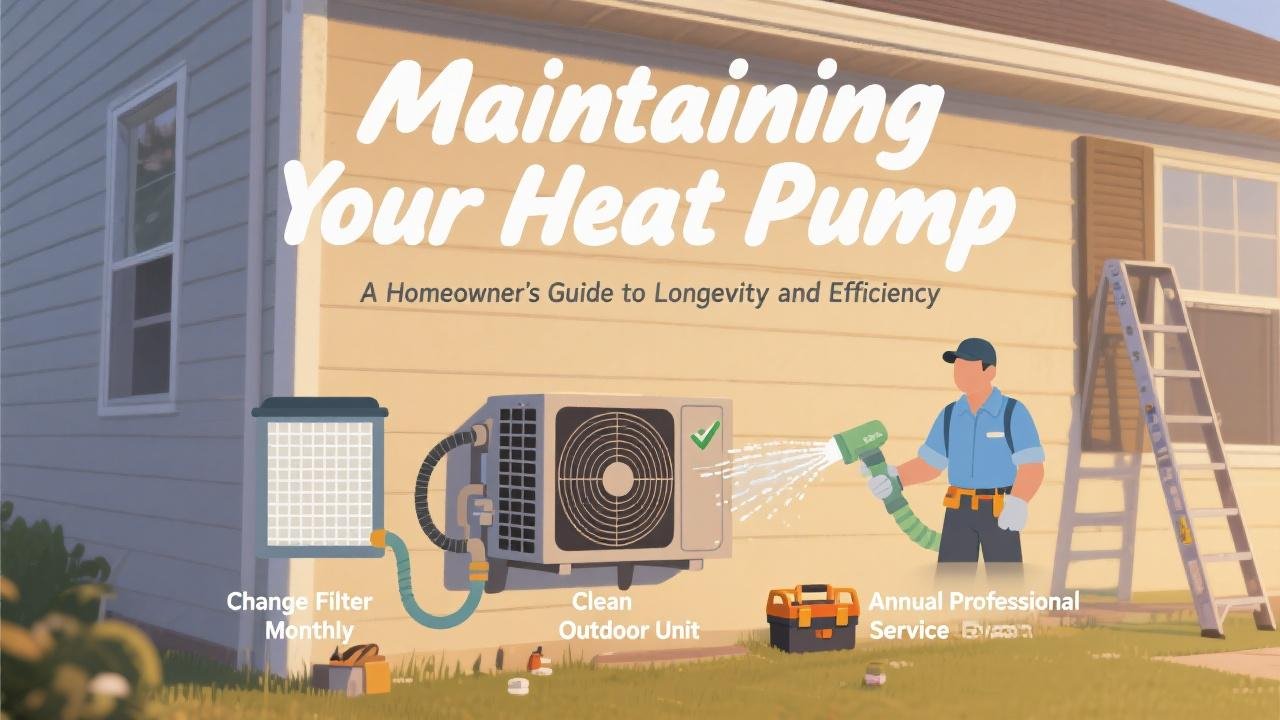Decoding the Language of HVAC Efficiency
When you’re investing in a new heat pump system for your home in 2025, you’ll encounter a flurry of acronyms and numbers related to its efficiency: SEER2, HSPF2, EER2, COP. These ratings are more than just technical jargon; they are crucial indicators of how much energy your heat pump will consume to heat and cool your home, directly impacting your utility bills and your home’s environmental footprint. Understanding these efficiency metrics is key to choosing a system that provides optimal comfort and long-term savings. This guide will break down these ratings and explain what they mean for you as a homeowner.
Why Heat Pump Efficiency Matters
Heat pumps are inherently more efficient than traditional furnaces and many older air conditioning systems because they move heat rather than generating it from scratch. However, not all heat pumps are created equal. Higher efficiency ratings mean:
* Lower Energy Bills: A more efficient heat pump uses less electricity to provide the same amount of heating or cooling, leading to direct savings on your utility costs.
* Reduced Environmental Impact: Lower energy consumption translates to a smaller carbon footprint, especially if your electricity isn’t sourced from 100% renewable energy.
* Eligibility for Incentives: Higher efficiency units, particularly those meeting ENERGY STAR Most Efficient criteria, often qualify for federal tax credits (like the up to $2,000 credit for air-source heat pumps) and local rebates, reducing the upfront cost.
Key Efficiency Ratings for Air-Source Heat Pumps (ASHPs) in 2025:
As of January 1, 2023, new testing procedures and updated efficiency metrics (SEER2, EER2, HSPF2) are in effect, providing a more accurate representation of real-world performance.
1. SEER2 (Seasonal Energy Efficiency Ratio 2): Cooling Efficiency
* What it Measures: SEER2 indicates the cooling efficiency of a heat pump (or air conditioner) over an entire cooling season. It’s calculated by dividing the total cooling output (in British Thermal Units, BTUs) by the total electrical energy input (in watt-hours) over that season, under specific test conditions that better reflect real-world installations.
* What the Number Means: A higher SEER2 rating means greater energy efficiency in cooling mode. For example, a heat pump with a SEER2 of 18 is more efficient than one with a SEER2 of 15.
* Minimum Standard: The current federal minimum SEER2 for new heat pumps is 14.3 (this can vary slightly by region in the U.S.).
* ENERGY STAR: To be ENERGY STAR certified, heat pumps must meet higher SEER2 ratings than the federal minimum. For ENERGY STAR Most Efficient 2025, the requirements are even more stringent.
2. HSPF2 (Heating Seasonal Performance Factor 2): Heating Efficiency
* What it Measures: HSPF2 indicates the heating efficiency of an air-source heat pump over an entire heating season. It’s calculated by dividing the total heating output (in BTUs) by the total electrical energy input (in watt-hours) over the season, again under updated test conditions.
* What the Number Means: A higher HSPF2 rating means greater energy efficiency in heating mode. A heat pump with an HSPF2 of 9.5 is more efficient than one with an HSPF2 of 8.0.
* Minimum Standard: The current federal minimum HSPF2 for new heat pumps is 7.5 (this can also vary slightly by region).
* ENERGY STAR: ENERGY STAR certified heat pumps require higher HSPF2 ratings. For ENERGY STAR Most Efficient 2025, specific HSPF2 levels must be met, along with performance at low temperatures (COP at 5°F).
3. EER2 (Energy Efficiency Ratio 2): Steady-State Cooling Efficiency
* What it Measures: EER2 measures a heat pump’s cooling efficiency at a single, specific outdoor temperature (typically 95°F) and indoor conditions. Unlike SEER2, it’s not a seasonal average but a snapshot of efficiency under peak load conditions.
* What the Number Means: A higher EER2 rating indicates better efficiency under high-temperature conditions. This can be particularly relevant in hotter climates.
* ENERGY STAR: Specific EER2 ratings are also part of the ENERGY STAR certification criteria.

Efficiency Ratings for Geothermal Heat Pumps (GSHPs):
Geothermal heat pumps use different metrics due to their stable ground-source temperature:
1. COP (Coefficient of Performance): Heating Efficiency
* What it Measures: COP indicates the heating efficiency of a geothermal heat pump at a specific set of indoor and outdoor (ground loop) temperatures. It’s the ratio of heat energy delivered to the electrical energy consumed.
* What the Number Means: A higher COP means greater heating efficiency. For example, a COP of 4 means the heat pump delivers 4 units of heat energy for every 1 unit of electrical energy consumed.
* ENERGY STAR: Geothermal heat pumps must meet minimum COP requirements to be ENERGY STAR certified.
2. EER (Energy Efficiency Ratio): Cooling Efficiency
* What it Measures: Similar to EER2 for air-source units, EER for geothermal systems measures cooling efficiency at specific operating conditions.
* What the Number Means: A higher EER means greater cooling efficiency.
* ENERGY STAR: Geothermal systems also have minimum EER requirements for ENERGY STAR certification.
What Do These Ratings Mean for Your Wallet?
While higher efficiency units often have a higher upfront purchase price, they can lead to significant long-term savings on your energy bills.
* Calculating Savings: The exact savings depend on your climate, your home’s insulation, your electricity rates, and your usage habits. However, upgrading from an older, less efficient system to a new, high-efficiency heat pump can often reduce your heating and cooling energy consumption by 20-50% or more.
* Payback Period: The initial higher cost of a more efficient unit can be offset over time by lower utility bills. Your HVAC contractor can often provide estimated payback periods.
* Incentive Eligibility: As mentioned, higher efficiency often means eligibility for tax credits and rebates, which directly reduces your net investment. For example, the federal tax credit of up to $2,000 for air-source heat pumps in 2025 requires the unit to be ENERGY STAR Most Efficient.
Beyond the Numbers: Other Factors Affecting Real-World Efficiency
While these ratings are standardized measures, real-world efficiency also depends on:
* Proper Sizing: An oversized or undersized heat pump will not operate efficiently. A qualified contractor must perform a Manual J load calculation for your home.
* Quality Installation: Correct installation, including proper refrigerant charging and ductwork sealing (if applicable), is crucial for achieving rated efficiencies.
* Ductwork Condition: Leaky or poorly designed ductwork can significantly reduce the efficiency of ducted systems.
* Home Insulation and Air Sealing: A well-insulated and air-sealed home reduces the heating and cooling load, allowing your heat pump to work more efficiently. Consider a home energy audit.
* Maintenance: Regular filter changes and annual professional maintenance help keep your heat pump running efficiently.
Making an Informed Efficiency Choice
Understanding heat pump efficiency ratings like SEER2, HSPF2, EER2, and COP is essential for making an informed purchasing decision in 2025. These metrics provide a standardized way to compare the energy performance of different models, helping you choose a system that will deliver comfort, savings, and environmental benefits for years to come. Always look for ENERGY STAR certified models, and for maximum savings and incentive eligibility, consider those recognized as ENERGY STAR Most Efficient.
When getting quotes from HVAC professionals, ask them to explain these ratings for the models they propose and to provide estimated annual operating costs. Reputable installers, like those you might find by seeking vetted local experts (similar to how EnergySage vets solar installers ), will be happy to help you understand these crucial aspects of your new heat pump system.



